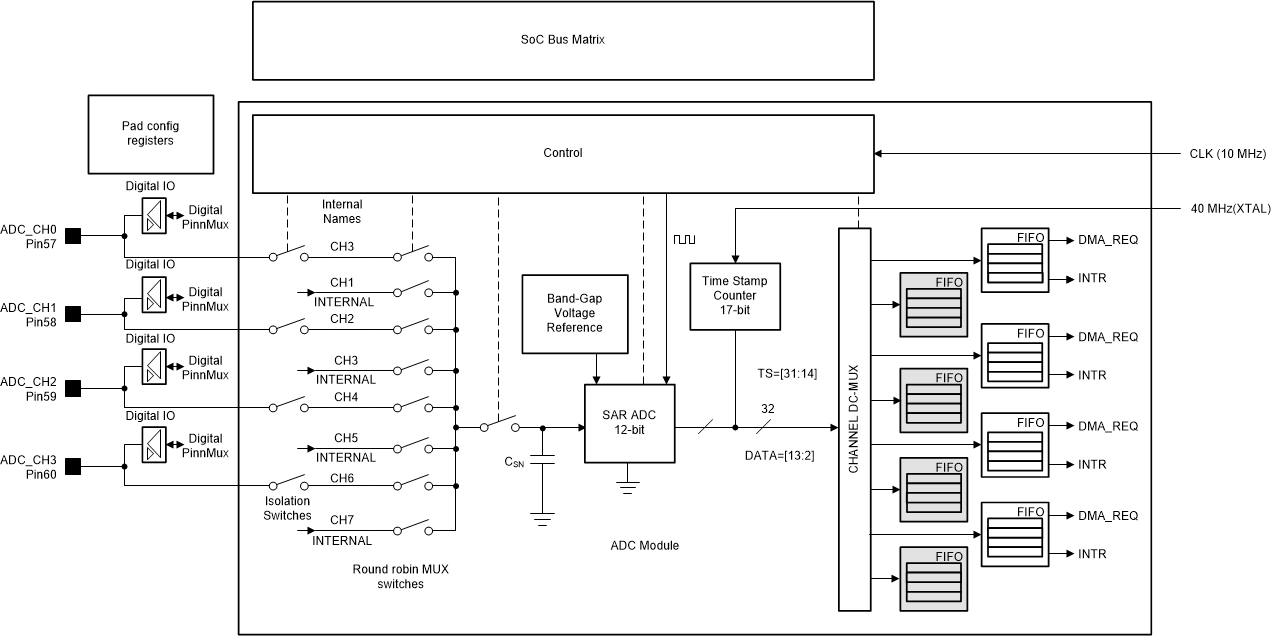SWRA679 January 2021 CC3200 , CC3220R , CC3220S , CC3220SF , CC3230S , CC3230SF , CC3235S , CC3235SF
1.2.1 Main Features
The CC32xx provides a general purpose, multi-channel Analog-to-Digital Converter (ADC). Each of the ADC channels supports 12-bit conversion resolution with sampling periodicity of 16 uS (62.5 Ksps/channel). Each channel has an associated FIFO and DMA. For detailed electrical characteristics of the ADC, refer to the CC3200 data sheet (SWAS032).
- Total of 8 channels:
- 4 external analog input channels for user applications
- 4 internal channels reserved for SimpleLink subsystem (network and Wi-Fi).
- 12-bit resolution
- Fixed sampling rate of 16 μs per channel. Equivalent to 62.5K samples/sec per channel
- Fixed round-robin sampling across all channels
- Samples are uniformly spaced and interleaved. Multiple user channels can be combined together to realize higher sampling rate. For example, all four channels can be shorted together to get an aggregate sampling rate of 250K samples/sec.
- DMA interface to transfer data to the application RAM; dedicated DMA channel for each channel.
- Capability to timestamp ADC samples using 17-bit timer running on a 40-MHz clock. The user can read the timestamp along with the sample from the FIFO registers. Each sample in the FIFO contains actual data and a timestamp.
 Figure 1-2 Architecture of the ADC Module in
CC32xx
Figure 1-2 Architecture of the ADC Module in
CC32xx